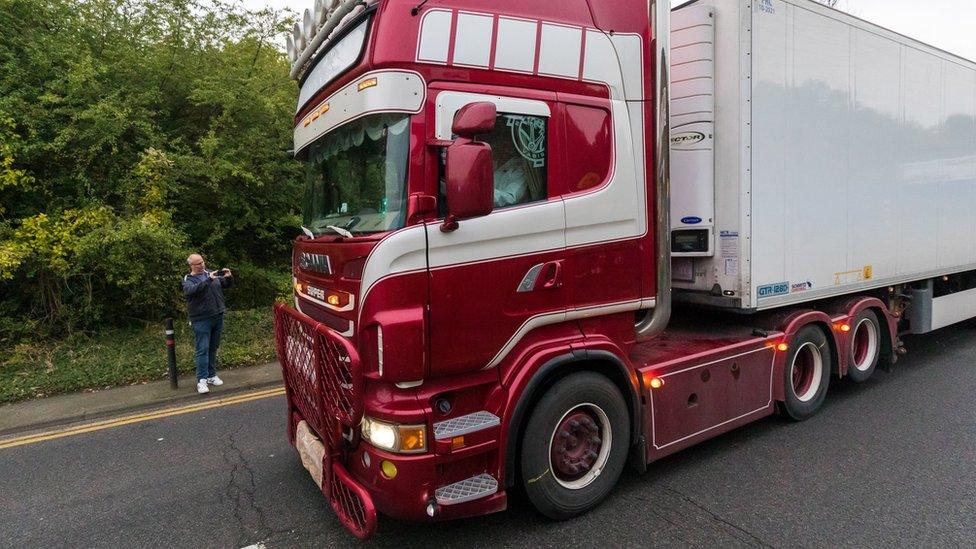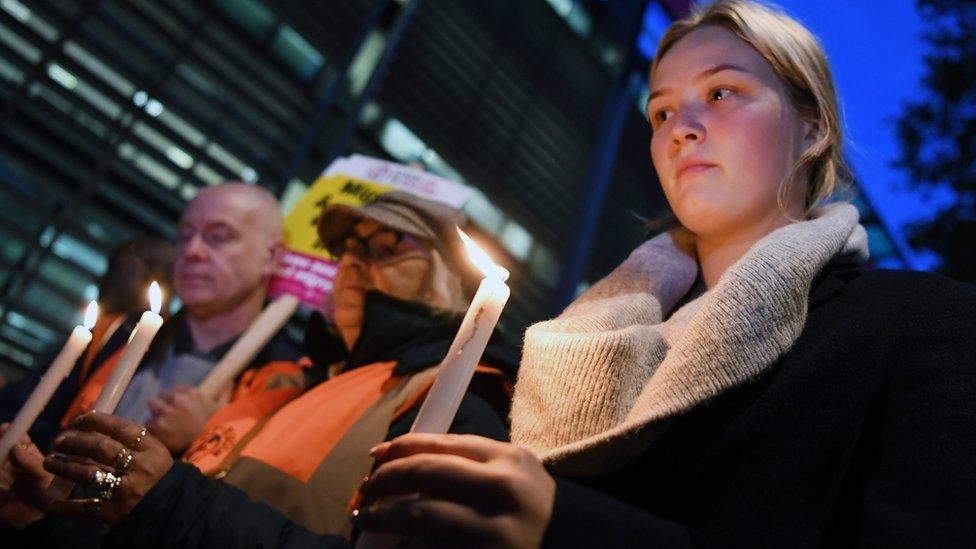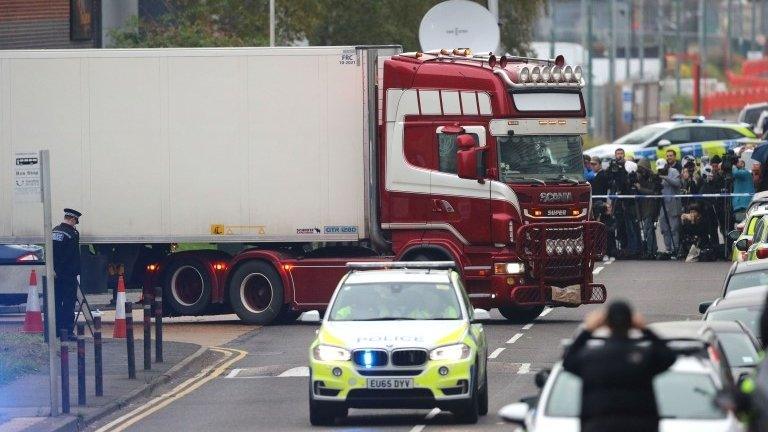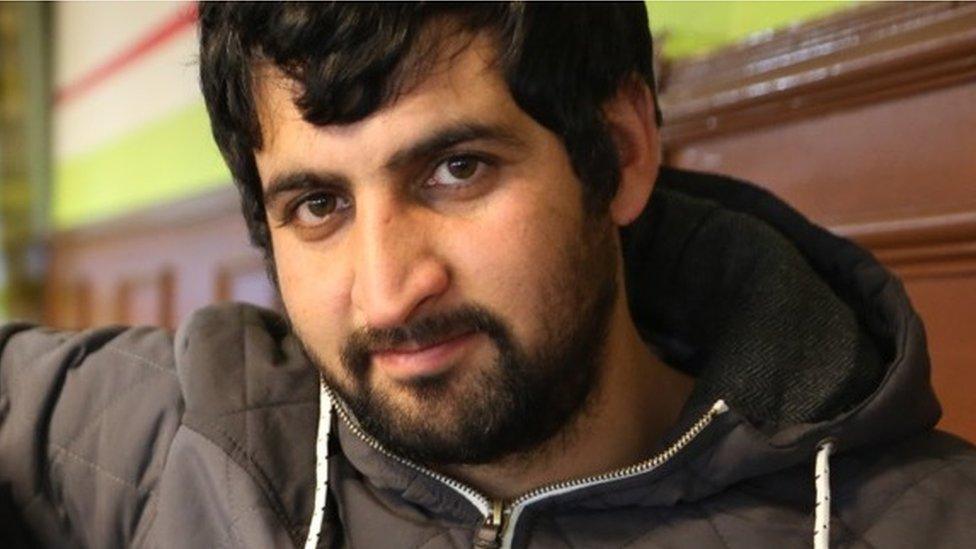Essex lorry deaths: How is a dead body identified?
- Published

The bodies were found in a lorry trailer in the early hours of Wednesday
Post-mortem examinations are beginning of the 39 people who were found dead in a lorry container in Essex. How are people identified in such circumstances?
The first step is to look for circumstantial evidence, says Dr Noemi Procopio, a lecturer in forensic science at Northumbria University in Newcastle.
These are items on or around the body that can give a clue to identity including clothes, belongings and documents, but they are not enough to prove who someone is.
"For example, clothing can be moved from one person to another," she said. "These things can be important but cannot be used to prove identity, just as a clue in the first instance."
The next step is a visual identification but this really depends on the state of decomposition, which can vary significantly depending on the conditions.
Decomposition starts soon after the heart stops beating, with enzymes released internally that start breaking down the body. "It can alter the shape of the face drastically for example quite quickly," Dr Procopio said.
In a hot, humid place with access for insects and scavengers, a body can be reduced to the skeleton within a week, she said.

Dr Noemi Procopio says scars and tattoos can help to confirm a person's identity
But if decomposition is still at an early enough stage, facial recognition can be carried out with pictures taken and shown to relatives or friends to help identify the person, although this still cannot conclusively prove identity.
Marks such as scars, tattoos or other characteristics are "more reliable ways to identify a person," Dr Procopio said.
The next stage is the biological identification, starting with the cheapest option of fingerprints (although this again relies on the state of decomposition). Fingerprints last as long as the soft tissue does, which in the right conditions can be several days or even a week.
BBC China correspondent Robin Brant said it was possible China could help identify the individuals "fairly quickly" through fingerprints. "Chinese nationals living [in China] require an ID card and since 2012 you need to submit a fingerprint most times to get that card," he said, adding the country's use of biometric and facial recognition could also help.
"The good point of fingerprints is you can have quantifiable information that is good statistically and not subjective," Dr Procopio said.
As well as determining how someone died and how long ago, a post-mortem examination can also provide an identity through bone and dental records. "You will have specific features in your bones after fracturing them for years after," she said.
But again, there need to be records to compare the features to and Dr Procopio said there are some academic arguments about the reliability of bone and teeth checks. Although there is a "lower strength" to such evidence compared to fingerprints or DNA, she said it could still be "very useful".

Vigils have been held for those who died in the lorry
DNA can be extracted from many different tissues, from "biological fluids" such as blood and saliva to the flesh, hair, organs and bones. And DNA can tell you two main things about a person.
The first is their bio-geographical ancestry by looking at specific regional modifications of the DNA. "You can get an understanding of the provenance of the person," Dr Procopio said.
Secondly, you can identify relatives going back three or four generations.

Dr Procopio described DNA as "the most powerful identifier"
This depends on having either a relative or family member willing to be tested or having a database large enough so that even if the person isn't in it, an immediate or distant relative might be.
China is understood to have the largest DNA database in the world, contains profiles of about 40 million people.
"DNA is the most powerful identifier," Dr Procopio said. Collecting DNA data can take up to two days, while the amount of time it takes to then find matches in a database depends on the country the database is in.
"From my experience working in one country, within a week we were able to get the DNA checked," she said.
Police have not said how long they think it will take to identify those found in the lorry container, but know there will be many worried families desperate to find out.
- Published25 October 2019

- Published24 October 2019

- Published24 October 2019

- Published23 October 2019
